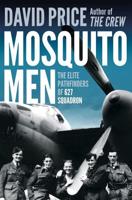Publisher's Synopsis
This historic book may have numerous typos and missing text. Purchasers can usually download a free scanned copy of the original book (without typos) from the publisher. Not indexed. Not illustrated. 1897 edition. Excerpt: ...must be decorated to match or harmonise with their surroundings, with due regard to disguising the fact that they are iron structures. The writer has a radiator of no more than a neat design, but decorated in two shades of pale mauve, and the effect is described, by those who see it, as exceedingly good. Two shades of mauve is quite a daring colour scheme for such an appliance, but the decorator who did the work showed how capable he was in colour treatment. The Dysart radiator, Fig. 221, is a design that will bear very fine treatment if carefully done. Enamelled pure white, however, it has led inexperienced people to believe it was porcelain; the design of the ironwork favours this idea very much. The materials that may be used to cover radiating surfaces have already been spoken of (p. 12), but it is desirable to again mention that it is the outer surface or skin of the radiator that affects the radiating qualities. A plain, smooth iron casting is a good heat diffuser; a rusty one is better, but neither are as good as one coated with lampblack, or dull white lead. Fortunately, the ordinary paints, enamel paints and varnishes of commerce, are all more or less good to use, but in these there might be greater care shown. There are some enamels better suited for the purpose than others. Polished metals are distinctly bad radiators, but with the view to make hot-water heating still more popular, the writer has made an extended series of experiments with polished brass, with the view to making highly finished ornamental radiators of this material. The best of iron radiators are objected to sometimes, but a well-designed brass radiator should be admitted anywhere. The result of the experiments was to find that brass, which is an excellent..










